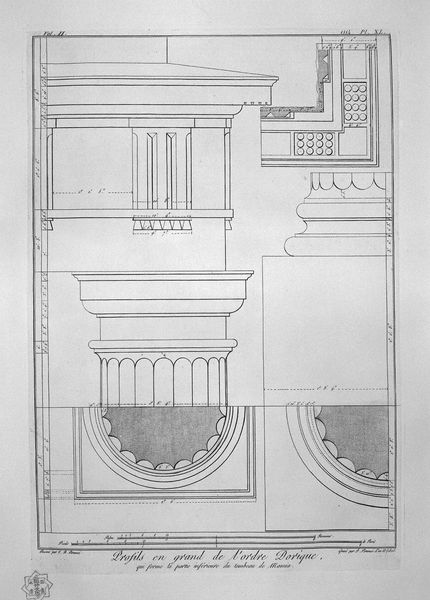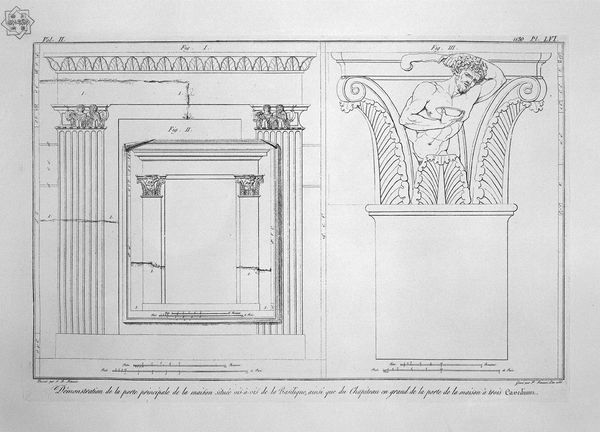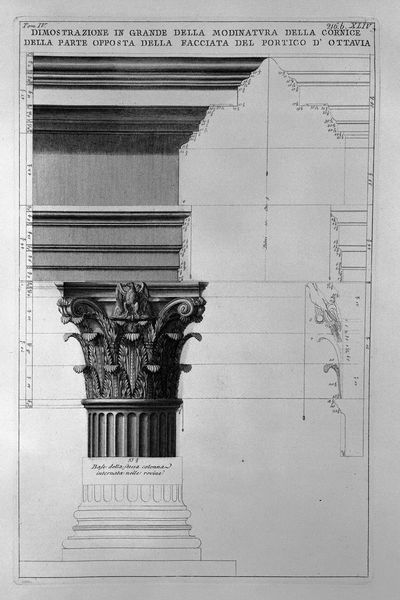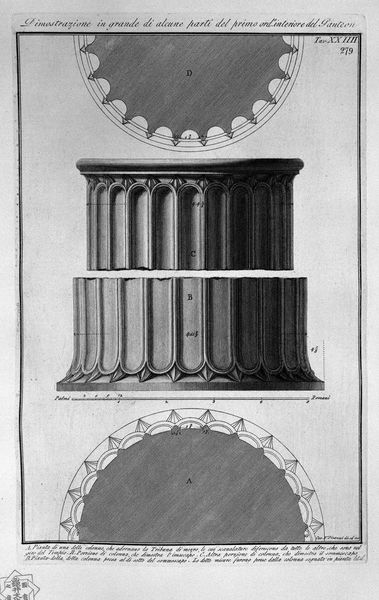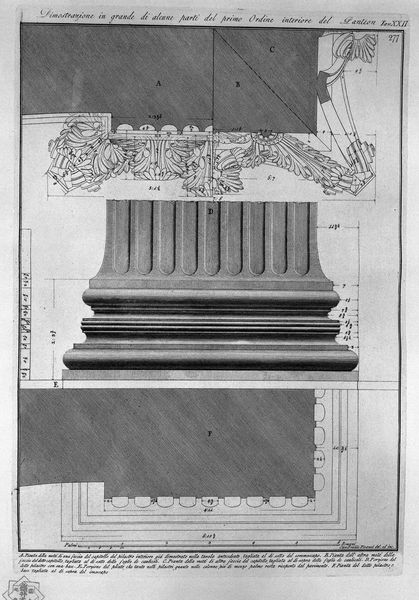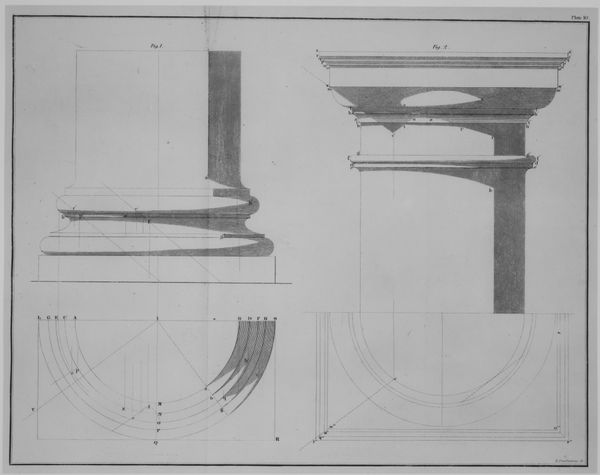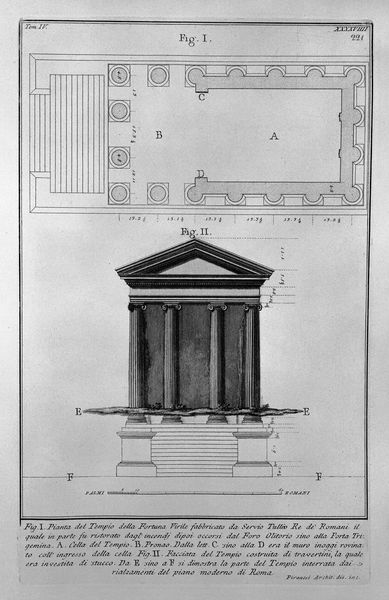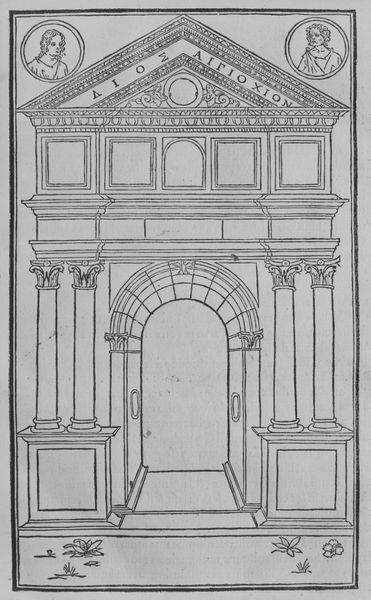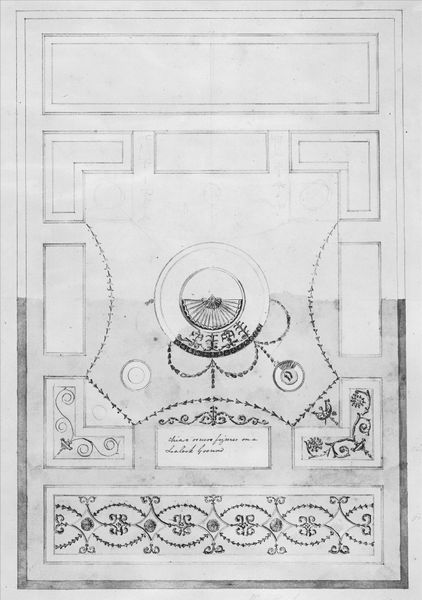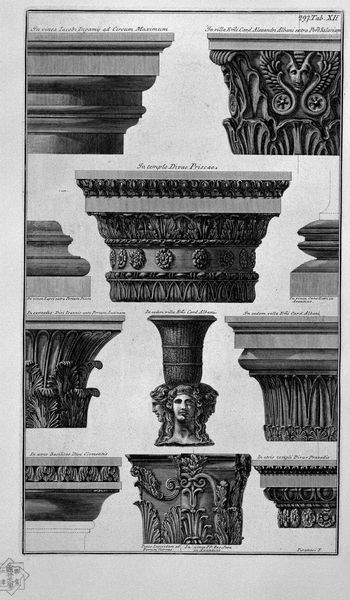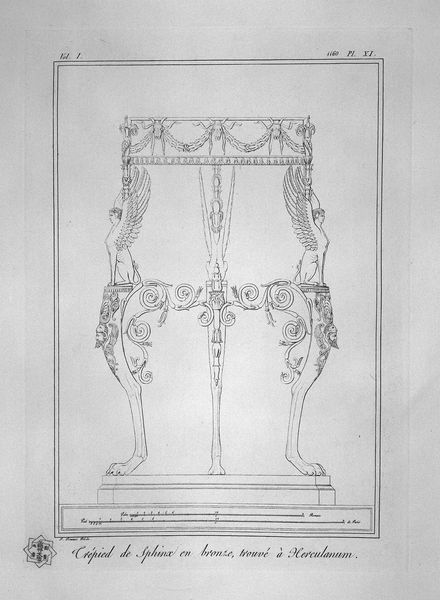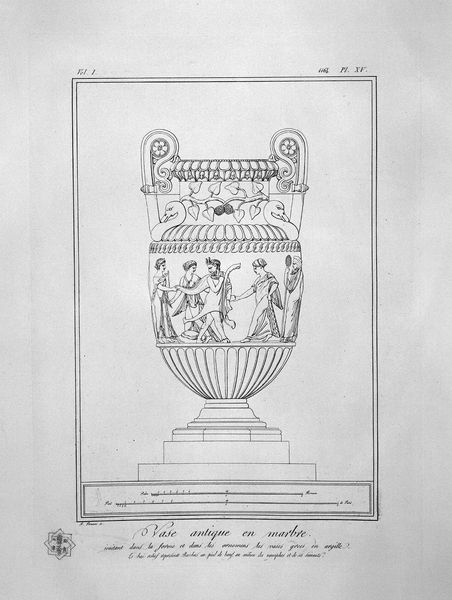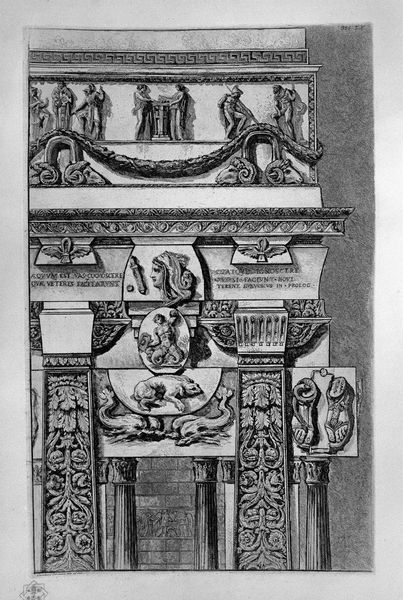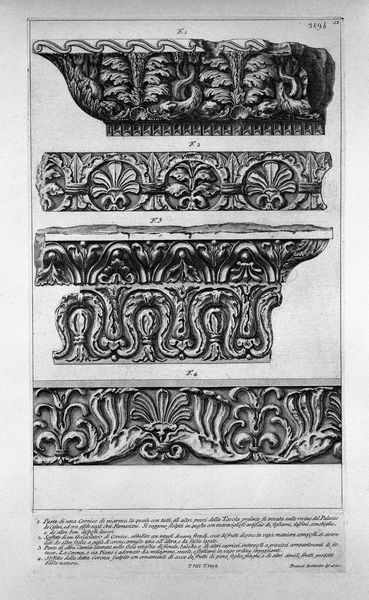
Profiles in large Doric order constituting the bottom of the tomb of Mamia
0:00
0:00
drawing, graphite, pen, engraving, architecture
#
drawing
#
pencil sketch
#
greek-and-roman-art
#
form
#
geometric
#
line
#
graphite
#
pen
#
pencil work
#
history-painting
#
academic-art
#
decorative-art
#
engraving
#
architecture
#
realism
Copyright: Public domain
Curator: This meticulous drawing by Giovanni Battista Piranesi offers precise "Profiles in large Doric order constituting the bottom of the tomb of Mamia." It showcases his incredible skill with graphite, pen, and engraving. The subject is an architectural elevation and section. Editor: There's something profoundly still and monumental about it. The cool, almost sterile lines create a feeling of ancient permanence, like peering directly into the blueprint of eternity itself. Curator: The Doric order wasn't exactly known for being part of funerary settings traditionally, so the function of this specific tomb for Mamia is quite significant here. What materials would have gone into its actual creation? The sheer labor! Editor: I'm also curious about the choice of Doric. It's associated with strength and masculinity. Who was Mamia and how does the choice of the Doric order play into their public persona or role in society? Were they consciously appropriating masculine architectural symbolism? Curator: Exactly! Think about access to the materials needed: the marble itself, where it was quarried, how it was transported, the skill of the stonecutters who shaped it. Then, understanding the societal norms in the Roman empire and how its system might have shaped those resources… It's not merely an artistic choice but an economic and social statement as well. Editor: The crisp precision of Piranesi's lines and angles makes it difficult to intuit the texture of those materials. It's almost like the physical reality is sublimated into pure idea and social commentary. He's flattened history, so that we understand labor disparity! Curator: Precisely! While Piranesi’s lines might feel almost too clinical, it prompts us to consider architecture not just as beautiful aesthetics but the social implications surrounding their making, funding and cultural value, which in this example is to honor or immortalize a particular individual in the fabric of that society itself. Editor: Indeed, beyond the geometry, it brings up critical questions about commemoration, power, and whose stories are enshrined—or, perhaps more accurately, who gets to afford the enshrining. Thank you for revealing more on that matter, the art can now speak to this truth in that time.
Comments
No comments
Be the first to comment and join the conversation on the ultimate creative platform.
